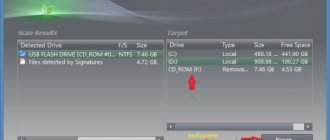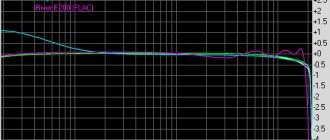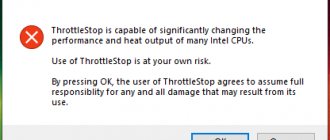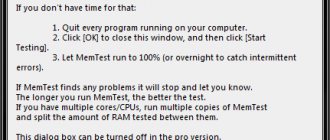Access to CPU-3 information
CPU-Z is especially often used by overlockers (those who know how to efficiently overclock a processor). Moreover, if you need to know exactly how the components of your device work or not get into trouble by sending the equipment for repair, you should install this program. Moreover, the license is freely available.
By downloading CPU-Z, the Russian version of which is provided at the link below, you will instantly determine:
- processor chipset name;
- learn about maximum power consumption;
- set the real frequency;
- determine all the parameters of the graphics card;
- you will see information about the motherboard and take a look at the specifications.
In addition, the utility has a “Validation” function. This is a full report on all system settings. This report can be saved in one of the convenient formats for PC: txt or html. And after that, exchange information with other users to show what can be achieved with proper “overclocking”.
Download CPU-Z Portable Rus
One of the advantages of the program, besides its functionality: it weighs very little (only 3 MB). The utility will work from external or built-in storage media. Once you finish working and delete the application, all its data will disappear from the system forever. After all, all the settings are located only in the program folder.
How to start the program?
The program is available in English and Russian. You can immediately download the Russian version.
- First you need to download the program.
- The downloaded CPU-Z x64 or x34 (depending on what OS you have) must be unpacked into any folder, you can even directly onto a flash drive.
- After unpacking is complete, run the exe file.
- That's all - the program works and performs all its functions! And the unpacked file can be transferred to any folder or to any external storage medium.
CPU-Z capabilities for a computer
Processor information:
- Number of cores and processors;
- Frequency (clock);
- Available instructions;
- Level cache capacity;
- Technical process;
- Socket and architecture;
- Family, name;
- Voltage.
Data about the video card in CPU-ZET:
- Memory, chip and shader domain frequency;
- Stepping and development;
- Name, capacity, type and developer.
Mother card:
- Series, creator;
- BIOS version;
- Schemes and revision;
- Graphic components.
RAM:
- Memory channels;
- SPD information online;
- Timing and clock frequency;
- Capacity and view.
What is this program and how does it work
CPU Z is a utility for determining the characteristics of computer hardware based on the performance of built-in sensors. Applications that are similar in functionality are Sandra, AIDA64 or Speccy.
The utility is distributed free of charge and supports the Russian language. Its use assumes that the user has some knowledge of computer hardware: before, for example, looking at the temperature of the CPU or graphics adapter, you need to at least know the acceptable limits.
It should be taken into account that, like its analogues, the utility does not support all hardware: sometimes it does not show memory or does not show spd, does not determine component models, etc.
In this case, the only way to fix the problem is to install a similar utility. If support for any components is not provided by the developers, installing additional DLLs and other “dancing with a tambourine” will not help.
You can download the program in Russian on the official website at: https://cpuz.ru/cpuz_download.htm.
Unlike more advanced programs such as Sandra or Everest, CPU Z cannot conduct hardware tests - only determine its characteristics.
However, in some cases, for most users this is enough.
Advantages and characteristics of CPU-Z Rus
Main advantages:
- Freely distributed license;
- All platforms and processors are supported;
- Accurately and quickly displays information about the components of the device.
Characteristics of UPU-Z in Russian:
- Developer: CPUID;
- Supported OS: Windows 7, 8, 10, XP, Vista;
- Russian language: the application supports;
- Last updated: 01/16/2018;
Features of the portable version
The CPU-Z utility displays processor characteristics, such as name and manufacturer, frequency, and frequency multiplier, which partially determine how the CPU can be overclocked. In addition, it provides detailed information about the cache size, L1 and L2 caches, motherboard, memory, SPD and graphics card. The application provides data on exact names, manufacturers, frequencies, volumes and other characteristics.
The characteristics of each component are displayed on the corresponding tabs. In addition, CPU-Z tests the computer and the CPU. This is an indispensable tool for viewing computer parameters and drawing up reports on its operation.
CPU-Z Portable interface in Russian
Processor section
When opening CPU-Z, the user will see a simple design consisting of windows. And this is not bad, because with a large amount of information it is fashionable to get confused. In this tab you can see the following fields:
- Code Name – the main name of the processor (its code). When created, it is given a symbolic code, until the moment it goes on sale. Then sellers get down to business and come up with such complex names that 2 almost identical processors that are part of the same series or have almost the same number cannot be identified. Or, on the contrary, a huge gap between the lines;
- Package – packaging. The processor core cannot be connected to the motherboard immediately, since there are countless tiny contacts. Therefore, it is first placed on a substrate - a kind of adapter, and then connected to the motherboard. Some cores may be produced in different series of cases;
- Technology – displays the existing technical process, according to the instructions of which the kernel was created. Standard units of measurement are nanometers and micrometers. Standard – 45-50 nanometers;
- Name – zone with the name of the processor, displays how the CPU-Z sees it. The importance of this field depends on the version of the software used;
- Specification – CPU list of the processor. The field in which the old name is stored. Depends only on the component itself, it shows correctly in any version;
- Core Voltage – supply voltage;
- Next comes CPUID - a line that produces 3 values that indicate the kernel and revision;
- Revision – displays the kernel revision. Modern revisions have less heat generation and accelerate faster, so it’s worth looking for the newest revisions;
- Instructions – list of recommendations used by the processor;
- Extrended CPUID – registers that specify information about the processor. Usually specified by default.
Conclusion
CPU-Z is useful to every user who needs information about the components of a personal device - data about the video adapter, processor and RAM.
Asus CPU-Z
Users often wonder what kind of program this is? CPU-Z is used to test a computer based on its main technical characteristics. The CPU-ZET contains all available elements to check the quality of work of each model.
Important! ASUS has created its own version of CPU-Z. It is left with the ROG series gaming laptop models.
Features[ | ]
The program allows you to obtain the following information:
- About the processor[3]: Processor name
- Architecture
- CPU TDP
- Socket
- Technical process
- Core supply voltage
- Family
- Stepping and Revision
- Supported Instruction Sets
- Real-time clock speed
- CPU multiplier
- System bus frequency
- Cache size at all levels
- Physical cache organization
- Number of processor sockets used
- Number of processor cores and threads
- Manufacturer
- Type
- Adapter name in the system
In addition, the program allows you to create detailed reports in .txt and .html formats, as well as produce the so-called. Validation
[6] (English Validation): upload information about the system (in .cvf format) to a special website CPU-Z Validator containing a database of component clock frequencies and other information. The site also contains a Hall of Fame[7] (English: Hall of Fame)
Starting from version 1.51, the program is also distributed as an installation package.
Version 1.52 introduced the “Graphics” tab, which provides information about the video card.[8]
CPU-Z also supports hotkeys.[9]
Version 1.73 introduced a performance test and a processor stress test (CPUID Benchmark).











